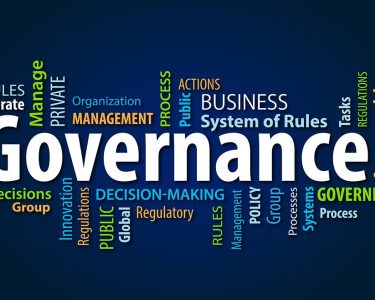The world is changing rapidly, and so too are the ways in which governments make decisions. From the rise of new technologies to changing public attitudes towards governance, the landscape of government decision making is undergoing a major transformation. As we look ahead to the future, it’s important to understand how these changes will impact our society and what steps we can take to ensure that our governments remain effective and responsive in an ever-changing world. In this blog post, we’ll explore some of the key trends shaping government decision making today and offer insights into where things may be headed in years to come. So buckle up – it’s going to be a fascinating ride!
What is the problem with government decision making today?
Today, government decision making is plagued by gridlock and political partisanship. This problem arises from the fact that government is made up of a large number of different actors with different interests and agendas. This diversity makes it difficult for government to make informed decisions on issues that are important to all participants.
One way to overcome this problem is for the government to create transparent processes that allow all participants to input information into the decision-making process. This will allow government to make reliable, informed decisions that benefit everyone involved. Unfortunately, this approach is not always feasible or appropriate.
Another problem with government decision making today is the lack ofeterogeneity in data sets. Many governmental organizations rely on limited data sets to make decisions on issues such as health care and environmental regulation. When these data sets are limited, it becomes difficult for government to make accurate decisions.
In order to solve these problems, governments need to develop new technologies that can help them collect more diverse data sets and make better decisions. These technologies will require significant investment, but they could be worth it if they lead to improvements in policymaking outcomes.
How will technology change the future of government decision making?
Technology has always been a driving force in the social and technological evolution, and it is no different in the world of government decision making. The use of technology has altered how governments make their decisions, and it will continue to do so in the years to come. Here are four ways that technology is changing the way governments make decisions:
1. Increased Access to Information: One of the main benefits of technology is its ability to provide increased access to information. This is especially true when it comes to government decision making, as citizens have a greater ability to hold their government accountable. Not only can they see what government officials are doing on a daily basis, but they can also access data that was previously unavailable. This allows for more informed decision making, which ultimately leads to better outcomes for all involved.
2. Automated Decision Making: Another benefit of technology is its ability to automate certain tasks. This can significantly reduce the time needed for government officials to make decisions and reach conclusions. For example, some departments now use automation software that helps them quickly gather information from various sources and analyze it in order to form conclusions. As a result, these departments are able to make more accurate decisions much more quickly than ever before possible.
3. Improved Communication between Government Officials and Citizens: A third benefit of technology is its ability to improve communication between government officials and citizens. Technology allows for quick and easy communication between these two groups, which not only improves transparency but also builds trust between both parties
How will social media change the way we interact with government?
Government decision making is changing. Social media is a large part of this change and has the potential to impact how we interact with government in a number of ways.
First, social media platforms allow for rapid feedback and collaboration on decisions. This makes it easier for people to share their thoughts on a proposed policy or decision, and allows for better consideration of alternative perspectives. This participatory approach to decision making can lead to more effective policies and improved public trust in government.
Second, social media platforms provide governments with access to a wider range of data. This data can be used to track trends and anticipate public reaction to proposed policies. Governments can use this information to make informed decisions about how best to serve the public.
Third, social media platforms are increasing people’s awareness of their rights and the importance of democracy. Social media platforms provide a platform for people to voice their opinions and advocate for their rights. This increased engagement with government is contributing to an appreciation of democracy overall and Increasing citizens’ understanding of their role in politics and governance process.
Social media will continue to play an important role in government decision making going forward. By using social media platforms intelligently, governments can ensure that they are providing effective services while maintaining public trust
What are some potential solutions to the problems with government decision making?
There are a number of potential solutions to the problems with government decision making. One way is to rely more on algorithms and computer models to make decisions. This can help to avoid bias and provide more objective decisions. Another solution is to use crowdsourcing or citizen participation in decision-making processes. This can allow for a more collective approach, which might be more effective at solving problems. Additionally, governments could improve their communication and transparency policies in order to better inform citizens about the decisions that are being made.
Conclusion
Looking into the future, it is clear that government decision making will continue to change in ways we cannot yet imagine. We are constantly growing and evolving as a society- this has always been true, but it seems especially apparent now with the rise of technology and the way that it is changing our daily lives. As policymakers wrestle with how to best respond to these changes, they will need to keep an eye on what is happening in the private sector as well. This type of interplay between public and private sectors is essential for ensuring that our policies reflect current realities and meet the needs of all Americans.




